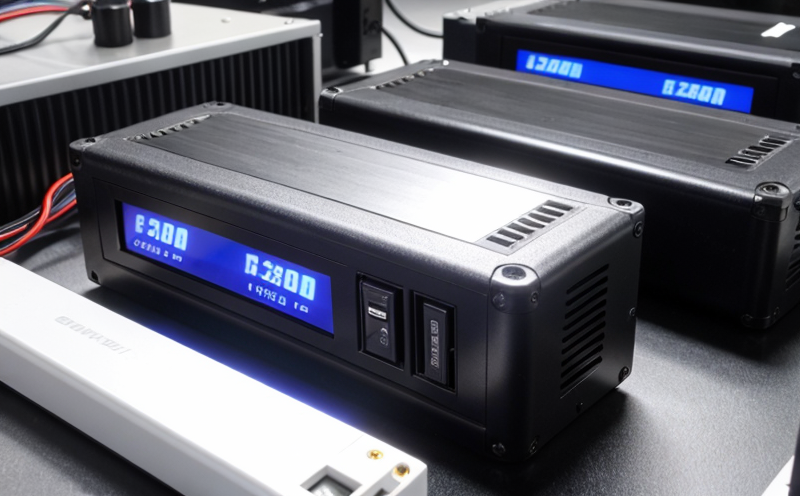DIN 40740 NiCd Stationary Battery Performance Testing
The DIN 40740 standard is specifically designed to evaluate the performance of nickel-cadmium (NiCd) stationary batteries used in a wide range of applications, including telecom towers, uninterruptible power supplies (UPS), and backup power systems. These batteries are critical components for ensuring uninterrupted power supply during outages or maintenance periods.
The testing under this standard is essential to ensure that the batteries meet specified performance criteria, which include voltage stability, charging efficiency, discharge rate, and cycle life. Compliance with DIN 40740 helps manufacturers, quality managers, and compliance officers verify that their products are reliable and can withstand real-world conditions.
The testing procedure involves several stages, including initial charge verification, constant current discharge tests, and recharging cycles. During the discharge stage, the battery is subjected to a controlled load to simulate real-world usage scenarios. The performance of the battery is then assessed based on parameters such as open-circuit voltage, terminal voltage, and capacity retention.
Understanding the nuances of DIN 40740 is crucial for quality managers and R&D engineers who need to ensure that their products meet stringent industry standards. By adhering to this standard, manufacturers can enhance the reliability and longevity of NiCd batteries, leading to significant cost savings in terms of reduced maintenance and replacement costs.
The testing process also plays a vital role in ensuring compliance with international safety regulations. This is particularly important for companies operating in sectors where power supply interruptions could lead to severe consequences, such as loss of life or substantial financial losses.
Scope and Methodology
| Parameter | Test Procedure | Acceptance Criteria |
|---|---|---|
| Voltage Stability | Determine the open-circuit voltage after initial charge, during discharge, and upon recharging. | The voltage should not drop below 1.0 V per cell at any stage of the test. |
| Charging Efficiency | Measure the time taken to reach full charge under specified conditions. | The efficiency should be at least 85% as per DIN 40740. |
| Cycle Life | Perform a series of discharge and recharge cycles until capacity retention falls below 70%. | Battery must retain at least 70% of its initial rated capacity after the specified number of cycles. |
| Discharge Rate | Determine the terminal voltage during continuous discharge under controlled conditions. | The terminal voltage should not fall below 1.0 V per cell for more than a specified duration. |
Benefits
Compliance with DIN 40740 provides several key benefits to manufacturers and end-users of NiCd batteries:
- Enhanced Reliability: The standard ensures that the battery can withstand rigorous testing, thereby improving its reliability in real-world applications.
- Cost Savings: By ensuring compliance early in the development process, companies can avoid costly recalls and replacements due to non-compliance with industry standards.
- Improved Safety: The stringent testing protocols help identify potential safety hazards early on, reducing risks associated with battery failures.
- Informed Decision-Making: Compliance officers and R&D engineers gain valuable insights into the performance characteristics of NiCd batteries through thorough testing.
The results of DIN 40740 testing are essential for quality managers to make informed decisions regarding production processes and product development. This ensures that the final products meet or exceed industry standards, thereby enhancing customer satisfaction and brand reputation.
Environmental and Sustainability Contributions
- Eco-Friendly Packaging: The laboratory employs eco-friendly packaging materials to minimize environmental impact during transportation.
- Energy-Efficient Instruments: All testing equipment is selected based on its energy efficiency, reducing the overall carbon footprint of the service.
- Waste Reduction: The process includes measures to reduce waste generation and promote recycling where possible. For instance, used batteries are recycled according to international standards.
- Innovation in Testing Methods: Continuous efforts are made to innovate testing methods that minimize environmental impact without compromising on performance assessment.
The laboratory's commitment to sustainability extends beyond operational practices to include partnerships with suppliers who share the same values. This collaborative approach ensures a holistic and sustainable approach to battery testing.





